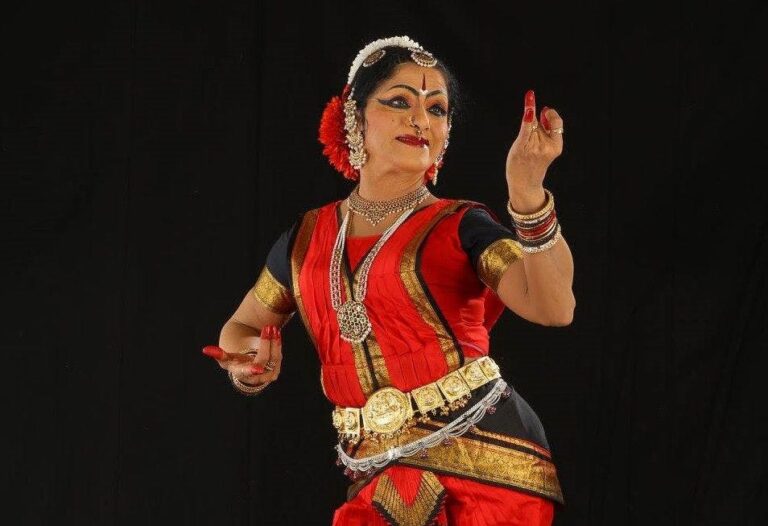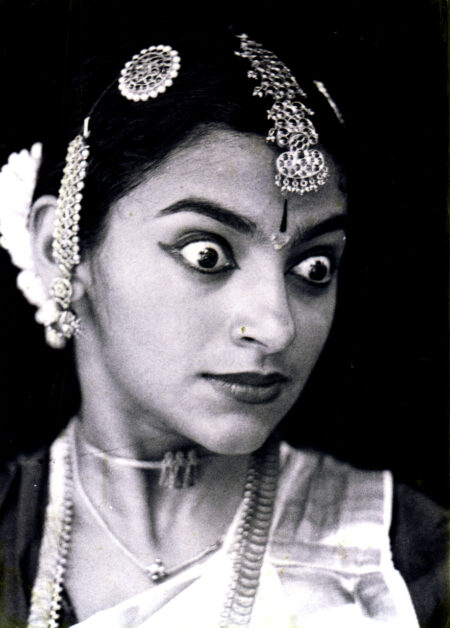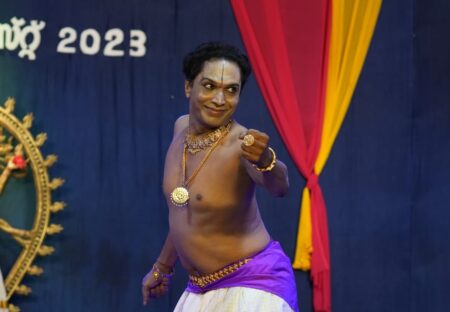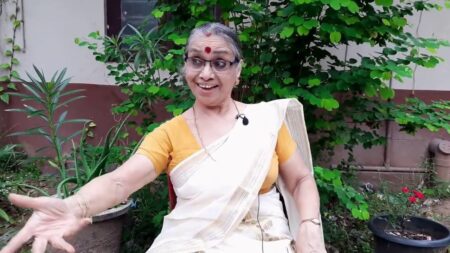Regular practice of Veerabhadrasana facilitates mandi adavus and vinyasas.
There are many variants for Veerabhadrasana. The first variant, Veerabhadrasana-1 makes the hip joints and the vertebral joints flexible thereby increasing the range of movements. This asanas also strengthen the arms, shoulders and thighs.
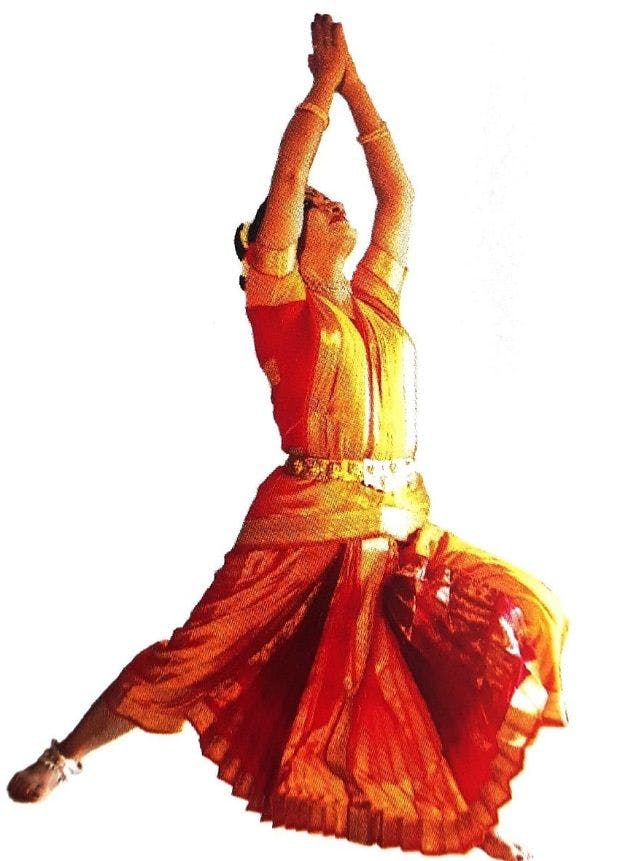
How to do? Stand in Thadasana. After a few relaxing breaths, place the hands on the flanks, place the feet approximately around three feet apart. While exhaling, turn to the right. Take a deep inhalation.
While exhaling, keeping the left lower limb straight, bend the right knee describing an angle of around ninety degrees, the leg between the knee and the ankle, remaining perpendicular to the ground.
Exhale and raise both hands from sides to join the palms right above the head keeping them stretched. Keep looking at the joined palms with the head slightly raised.
In this position take around five breaths. While inhaling, straighten the right leg at the same time bringing back the trunk to face the front, still keeping the stretched hands joined.
While exhaling, join both the feet, simultaneously lowering the hand to return to Thadasana. Repeat on the left side.
Application: Facilitates the execution of mandiadavus and vinyasas. Even in advanced practices such as devathavandana (paying obeisance to Gods), this is widely employed.
Write to us at [email protected]

